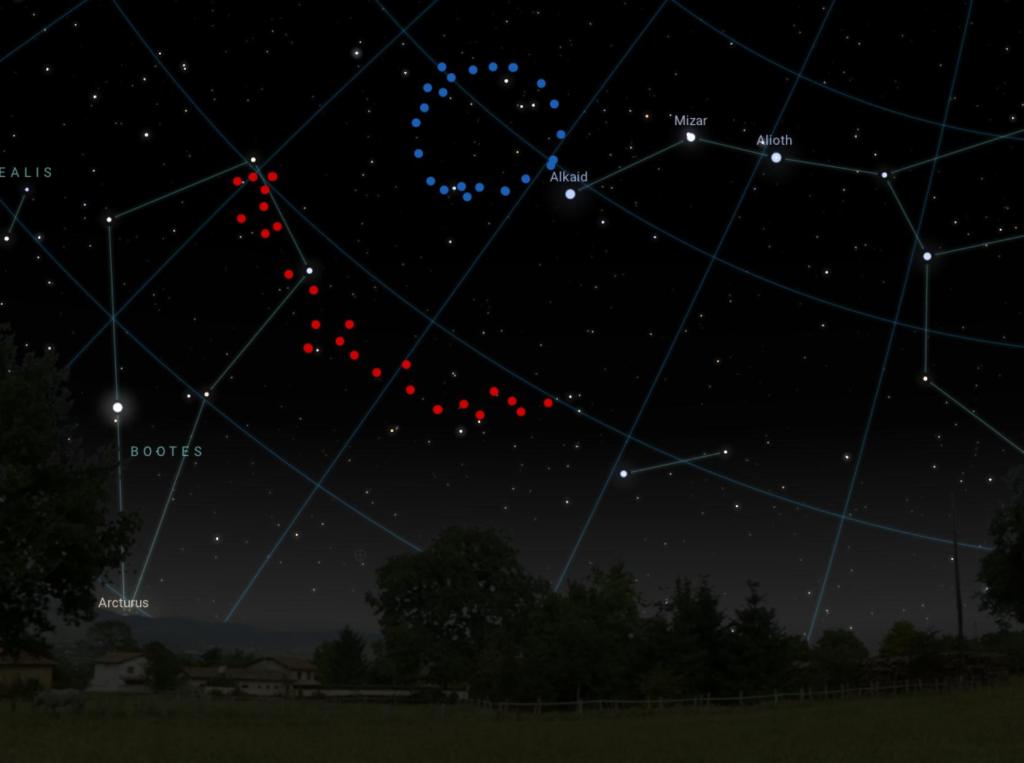Image: Saturn’s rings color-enhanced/University of Colorado
The big news in our space-y neighborhood this week is that we may have a new player on the block. Images from NASA’s Cassini spacecraft taken in 2013 are showing what looks like a new moon being born at the edge of Saturn’s A ring. It’s something astronomers have never seen before, but it might be less rare and unique than we think. Saturn’s rings are among the most dynamic places in the Solar System, and there’s some evidence that they create and destroy moons with some regularity.
The half-mile wide object has already been nicknamed Peggy, and she isn’t a new discovery; the effects of this small body on the A ring are visible in Cassini images gathered in May of 2012 too.
Videos by VICE
But it’s worth pointing out that Peggy isn’t a moon yet like its established peer Titan. What astronomers have seen is an arc of icy material traveling along the edge of the A ring, an arc thought to be the result of gravitational perturbations caused by something larger like a new moon. Or the arc might be debris from something that has recently broken up, like an ill-formed moon that didn’t quite make it.
We might not think about it too much since the rings look so solid and unchanging from Earth, but Saturn’s rings are constantly changing.
For the time being—because these things can change every time we make a new discovery—the billions of particles in the ring system are broken, by name at least, into 23 groups. These are the ring sections and gaps. From Saturn moving out, they are: the D ring, the C ring, the Columbo Gap, the Maxwell Gap, the Bond Gap, the Dawes Gap, the B ring, the Cassini Division, the Huygens gap, the Herschel Gap, the Russell Gap, the Jeffreys Gap, the Kuiper Gap, the Leplace Gap, the Bessel Gap, the Barnard Gap, the A ring, the Encke Gap, the Keeler Gap, the Roche Division, the F ring, the G ring, and the E ring. The inner edge of the D ring is some 41,613 miles from Saturn and the outer edge of the E ring is 298,258 miles from the planet. That’s a ring system larger than the distance from the Earth to the Moon.
The rings consist of ice particles ranging in size from microns to mountains, and they are in a constant battle between the gravitational forces of Saturn and its fully formed moons. Some of those moons orbit within the ring gaps, namely the Encke and Keeler gaps, and act as shepherds to the particles, keeping the rings in what we see as nice clean bands. But there’s more going on than we can see.
Take the F ring, for example. The F Ring lies inside the inner part of Saturn’s magnetosphere, an area that contains a plasma layer rigidly correlating with the planet. This leads to the particles and dust in the F ring becoming charged, which in turn allows the ring to interact with nearby moons. This interaction between charged particles and moons can affect the particles’ behaviour, causing them to orbit out of resonance with their nearby shepherd moons.
The D ring has some interesting qualities, too. The brightest ring as seen by the Voyager spacecraft in the1980s has transformed over the last three decades. What was first seen as a narrow band is now a wide and more diffuse ring. It’s central light zone has shifted inwards towards Saturn by nearly 125 miles relative to the other ring features.
So how do these dynamic rings affect potential moon formation? It turns out, a lot. Astronomers used to think that all moons were created when a gaseous disc surrounding a new planet coalesced. But another, newer theory says moons can form from when debris in rings collides and coalesces. There are even models to support the idea.
The relationship between moons and rings gets even more interesting when we look at Saturn because the gas giant’s satellites follow a pattern. Saturn’s moons tend to bunch near the edge of the planet’s rings, and they become more spread out and large as they get further from the planet. The outer edge of Saturn’s rings marks what’s called the Roche limit, the point at which the planet’s gravity is too weak to allow a coalesced moon to survive. Inside the Roche limit, however, which means within Saturn’s ring system, gravity is such that moons could either form or be pulled apart. In the latter case, this would simply add debris to the rings.
What’s really interesting about the theory of moons forming and being destroyed within a ring system is that it means nothing is static. The delicate gravitational interplay of particles means inner fragments lose energy and fall towards Saturn while the outer fragments gain energy and move away from the planet. The latter fragments could form a moon and then another, and these moons could collide to form larger moons. Or they could collide and break apart.
So the newly discovered newborn moon might be a newborn moon, or it might be an ex-moon; there’s still more work to be done to figure out exactly what we’re seeing in these Cassini images. Whatever it turns out to be, we’ve managed to see an interesting moment in the D ring’s life that’s sure to shed light on the whole intricate Saturnian system.



